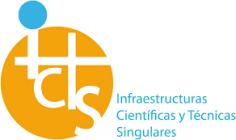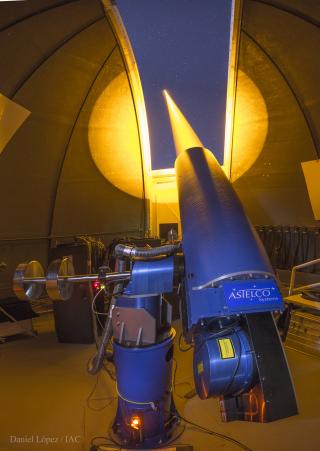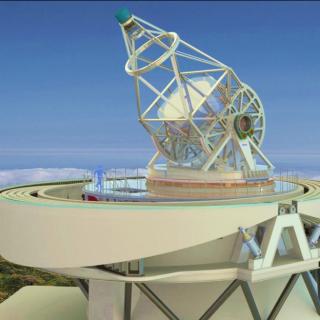General
The detection of extrasolar life is one of the most important scientific discoveries of the next decades. The ExoLife Finder (ELF) design is a highly flexible telescope-interferometer that acts like a coronagraph using the central star to magnify the independent combinations of the primary and secondary mirrors at a Gregorian focus, while allowing a high degree of cancellation in the center position. The IAC is involved in the design of a prototype, dubbed "Small-ELF", which will have 15 "primary" mirrors of 0.5m in diameter and a small elliptical secondary mirror. Initially, conventional mirrors will be used, but they will gradually be replaced by ultralight mirrors made of electropolymers. In addition, the "standard" rigid mechanical structure will be replaced by lighter tension cables. This new telescope concept, several times lighter than current and future 40-50 m telescopes, will allow new scientific cases to be addressed and will serve as a prototype for future large, lower-cost telescopes.
The Exo Life Finder is a telescope consisting of a large ring of small primary mirrors to achieve high angular spatial resolution with the primary scientific goal of studying exoplanet atmospheres for biomarkers. ELF will work as an interferometer to remove the central bright star and reveal the nearby exoplanet.
The Small-ELF telescope consists of an array of 15 0.5m mirrors, arranged off-axis in a 3.5m diameter circle, forming a common principal parabola. Small-ELF is a project that is part of the IACTEC "Large Telescopes" together with the Cherenkov Telescope Array, the European Solar Telescope and the New Robotic Telescope.

The consortium: The IAC collaborates in a consortium formed by the Institute of Astronomy of the University of Hawaii and the Center de Recherche d'Astrophysique de Lyon (CRAL/INSA) to develop aperture masking interferometry and deepen the technological knowledge linked to this technique with potential applications in the detection and characterization of extrasolar planets. The objective of this technology is to develop prototypes that place the IAC in an advantageous position to build 40-50m class telescopes at a lower cost by integrating tensioned cables ("tensegrity") and very light light mirrors.
The science: Small-ELF will provide a unique coronographic capability to the Spanish community. Although the primary scientific goal is imaging exoplanets around nearby stars, Small-ELF will provide high-contrast near-infrared images with applications ranging from detecting brown dwarf companions around solar-type stars, to stellar companions. around high-mass stars, and other objects like AGNs and quasars. In Spain, there are no other facilities capable of providing images with a contrast of more than 10**7 to 6 times the PSF in the near infrared.







